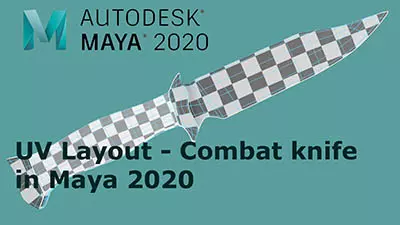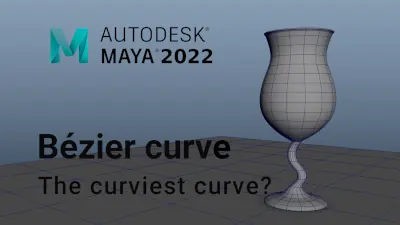Introduction to Maya - Modeling Fundamentals Vol 1
This course will look at the fundamentals of modeling in Maya with an emphasis on creating good topology. We'll look at what makes a good model in Maya and why objects are modeled in the way they are.
#
16
13-10-2012
, 01:37 AM
https://youtu.be/tBuOSlJFD4M
UPDATE:
I realize I could have added the suport edges more efficiently then using the cut faces tool and then merging the verts and deleting edges at the corners.
I could have deleted the diagonal edges, then added the support edges with the the cut faces tool and final just redrawn the diagonal edges and save the delete edges operation. Likewise on the final version. There are always lots of ways to do the same thing but finding ways to shave a couple key strokes multiplied by an entire model can add up to a big time saving, so it's always a good idea to seek the most efficient way to work. In a real world situation I'd have taken full advantage of symmetry as well.
"If I have seen further it is by standing on the shoulders of giants." Sir Isaac Newton, 1675
Last edited by ctbram; 13-10-2012 at 03:32 AM.
#
17
13-10-2012
, 11:48 AM
Registered User
Join Date: Oct 2007
Join Date: Oct 2007
Posts: 19
I didn't realise that you could fix the 'bridge' operation with offset, I was doing every other one manually and then using 'fill hole'
Just another question, on this particular model I haven't been modelling with smooth mesh because I was concerned the poly count would be too high, since there are lots of little pieces. I've modelled smooth mesh before, and then done smooth mesh preview -> polygons so that I can 3D print or render. Is it better to switch between smooth mesh preview to check the model and is it better to model, and carry out the conversion, is there a way to keep the polys low in that conversion?
#
18
13-10-2012
, 12:29 PM

Avatar Challenge Winner 2010
#
19
13-10-2012
, 01:47 PM
I was just pointing out that for models you plan to smooth or texture that quads and topology become more important and how there are ways to improve topology even if it is quads.
Hopefully that helps.
Rick
"If I have seen further it is by standing on the shoulders of giants." Sir Isaac Newton, 1675
Last edited by ctbram; 13-10-2012 at 01:51 PM.
Posting Rules Forum Rules
Similar Threads
Referencing Problem: Child Nodes misplaced on reloading of Parent Scene
by shekibobo in forum Maya Technical Issues replies 1 on 20-05-2008
Problem with NURBs booleans
by Silent.Samurai in forum Maya Technical Issues replies 2 on 07-05-2008
Modelling Showreel (nudity + possibly image heavy)
by fuseboy in forum Work In Progress replies 5 on 25-09-2007
Nurbs Modelling - Inserting Isoparms Problem
by AdamConway in forum Maya Basics & Newbie Lounge replies 9 on 22-07-2007
Organic Modelling DVD 1 Problem
by kennez in forum Maya Basics & Newbie Lounge replies 7 on 06-07-2004
Topics
Free Courses
Full Courses
VFX News
How computer animation was used 30 years ago to make a Roger Rabbit short
On 2022-07-18 14:30:13
Sneak peek at Houdini 19.5
On 2022-07-18 14:17:59
VFX Breakdown The Man Who Fell To Earth
On 2022-07-15 13:14:36
Resident Evil - Teaser Trailer
On 2022-05-13 13:52:25
New cloud modeling nodes for Bifrost
On 2022-05-02 20:24:13
MPC Showreel 2022
On 2022-04-13 16:02:13









